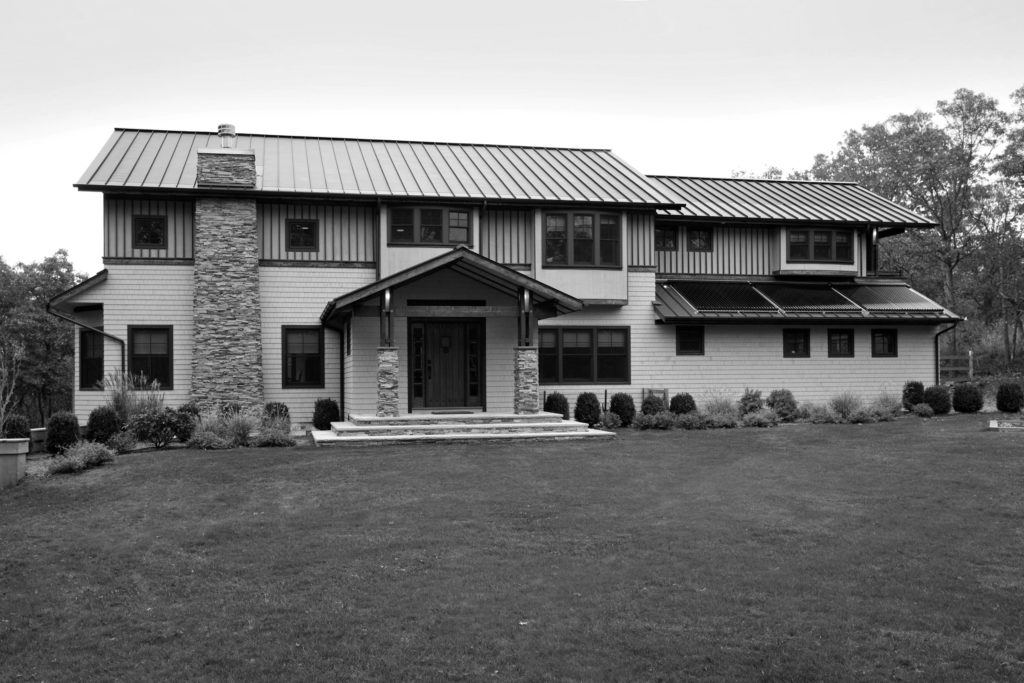In 2008, I founded the Hamptons Green Alliance (HGA) to promote sustainable, resilient building and maintenance practices. We knew we wanted our first project as an association to be an ultra-green luxury home. But first, we wanted to set some specific goals.
The HGA House goals.
The first goal we set for the house was to be USGBC LEED for Homes Platinum—the highest possible LEED certification. Then going even farther, earning as many LEED points as we possibly could.
Our second goal was for the house to be net-zero energy. In other words, it produces equal or more energy than it consumes, preferably through on-site. In similar fashion, renewable sources such as solar thermal hot water system, geothermal system, and renewable photovoltaic system. For example, a solar thin film.
The HGA agreed that these were excellent goals. But I felt like there was something more we could be doing. I read an article about my birth country, Norway, going carbon neutral by 2050. Since then, I hadn’t been able to stop thinking about going carbon neutral. I wanted to see if we could build a carbon-neutral house. That became our third goal for the project that became known as the HGA House.
The next steps.
The HGA sent out a letter to the architectural community about the project. Soon we heard from an architect in Southampton whose client wanted to reconstruct their house after a fire. They were on board to work with us to meet these three goals.
To meet these goals, we needed intense and complex interdependence between various systems. The HGA developed the term “systems integrated home” to apply to the integration of multiple means and methods of design and construction. Thus, to achieve maximum energy efficiencies. We retained the firm Verus Carbon Neutral to advise and assist us, and to perform a carbon audit to certify our carbon-neutral status. We also worked with a LEED rater who helped us through the LEED certification process.
The HGA House Results.
The rigorous application of science and established processes and protocols worked. The HGA House was completely carbon neutral in the construction phase. We were one of the first builders in the US to be certified carbon neutral, along with our major subcontractors. We also succeeded in our LEED goal. Thus, exceeding the total number of LEED points needed for a Platinum Certification by four points.
For the operations phase of the building, I used the common carbon metric to measure the house’s carbon footprint. We replaced almost all the energy used for electricity and heating that would have come from fossil fuels with renewable energy and measured that over the life span of the building. The renewable energy systems we implemented saved 70 percent of the energy being used in the house.
For a building to be considered net-zero energy, the building needs to operate for one year while energy usage is monitored. While the HGA House did not reach net-zero, it achieved a projected 75 percent energy reduction from the 2006 Standard New Home.
The HGA House was a success.
The methodology we developed to measure the carbon footprint of the construction stage now forms the beginning of an established framework to measure the greenhouse gas emissions in the construction of all buildings. We proved what the United Nations Environment Programme Sustainable Buildings and Climate Initiative found in their Buildings and Climate Change: Summary for Decision-Makers report in 2009: that with currently available and proven technologies, the reductions in energy consumption possible on both new and existing buildings are estimated to achieve 30–80 percent.[1]
Learn more about what’s possible with a consumer-centric, competitive advantage-based solution to the climate crisis by reading my book, Decarbonize the World.
[1] UNEP Sustainable Buildings and Climate Initiative, World Resources Institute, Common Carbon Metric for Measuring Energy Use and Reporting Greenhouse Gas Emissions from Building Operations, UNEP, 2010.
